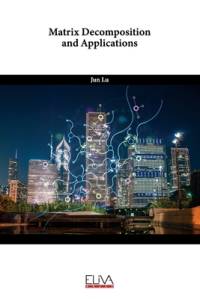Om Matrix Decomposition and Applications
In 1954, Alston S. Householder published Principles of Numerical Analysis, one of the first modern treatments on matrix decomposition that favored a (block) LU decomposition-the factorization of a matrix into the product of lower and upper triangular matrices. And now, matrix decomposition has become a core technology in machine learning, largely due to the development of the back propagation algorithm in fitting a neural network. The sole aim of this book is to give a self-contained introduction to concepts and mathematical tools in numerical linear algebra and matrix analysis in order to seamlessly introduce matrix decomposition techniques and their applications in subsequent sections. However, we clearly realize our inability to cover all the useful and interesting results concerning matrix decomposition and given the paucity of scope to present this discussion, e.g., the separated analysis of the Euclidean space, Hermitian space, Hilbert space, and things in the complex domain. We refer the reader to literature in the field of linear algebra for a more detailed introduction to the related fields. This book is primarily a summary of purpose, significance of important matrix decomposition methods, e.g., LU, QR, and SVD, and the origin and complexity of the methods which shed light on their modern applications. Most importantly, this article presents improved procedures for most of the calculations of the decomposition algorithms which potentially reduce the complexity they induce. Again, this is a decomposition-based context, thus we will introduce the related background when it is needed and necessary. In many other textbooks on linear algebra, the principal idea
Visa mer

